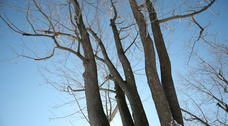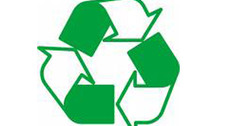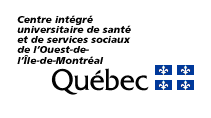2007-06-20

Concerned about the environment? If so, you’ll be pleased to learn that an innovative new project has been launched to transform the Douglas Institute into one of the most environmentally-friendly healthcare institutions in all of Quebec.
During Canadian Environment Week, June 4-11, the Douglas Institute officially launched a massive two-year “Go Green” campaign to radically reduce Douglas “environmental footprint” and increase energy efficiency. Important transformations to heating, cooling and electricity systems are already underway. The largest ecological project in Douglas history, it will improve the quality of the environment for patients, staff, and the community at large. The strategic goal is to qualify for “Go Green” Environmental Recognition Certification by 2009 from the international Building Owners and Managers Association (BOMA), whose certification is recognized around the globe.
Why is “Go Green” Certification Important?
Simply put, the certification ensures the Institute:
- offers a healthy environment for Douglas patients and staff;
- shows leadership in caring for the environment;
- meets, and even surpasses, rigorous new government environmental standards;
- inspires other institutions to do the same.
Will It Really Make a Difference?
Yes—a big difference. Thanks to the “Go Green” plan, Douglas energy savings alone will have the same effect:
- as removing from the road 997 Toyota Corollas that travel 15 000 km per year;
- as a Toyota Corolla travelling 373 times around the world per year;
- as providing heat for 699 2000 square foot homes per year.
Important transformations to heating, cooling and electricity systems, as a result of the “Go Green” plan, will reduce the Douglas’ total energy consumption by approximately 40 percent. Even more important is the dramatic impact these innovations will have on the environment—lowering Douglas greenhouse gas emissions by approximately 60 percent.
Is “Go Green” Affordable?
Definitely. As Douglas reduces his impact on the environment, he’ll also work hard to keep costs to a minimum. Here’s an example: the $5 million price tag for the energy savings component of the “Go Green” plan over the next seven years will be covered by 1) the Institute’s reduced energy needs and 2) grants from the federal Natural Resources Canada, and from Hydro-Québec and Gaz Métro. The Institute will also save money by selling certain recyclable material, such as scrap metal generated by the maintenance department, in order to offset the cost of recycling material of lesser economic value, such as plastics.
Who Is Overseeing the Work?

Together with Douglas staff, an engineering firm called Ecosystem is overseeing most of the energy-related modifications. These specialists in energy efficiency projects for institutional buildings have already assessed Institut buildings and designed energy efficient measures, and are managing all on-site construction currently underway. In addition, they guarantee the financial savings arising from their work. Douglas own Technical Services staff are working closely with this firm to ensure that the work is being performed to satisfaction, and that any inconvenience to Douglas staff is kept to a minimum.
Can Staff Helps the Douglas “Go Green”?
Absolutely! Their daily actions add up to enormous savings.
Did you know that if 1,000 Douglas employees turn off their lights as they leave at the end of a single workday, they’ll save enough energy to:
- light up 2 houses for an entire year?
- cool 6 average refrigerators for an entire year?
- take over 1000 five-minute showers?
- power 9 average home computers for an entire year?
They can also help by:
- turning off office air-conditioning units on evenings, weekends, and holidays;
- notifying maintenance staff about overheating problems in the winter, instead of opening the windows;
- alerting maintenance staff when there are dripping faucets or other small problems that can really add up over time;
- continuing your recycling efforts and looking for opportunities to find new ways to recycle.
True, these are small steps. But when the Douglas community joins forces to pare down energy costs, it makes a huge impact!
Thinking Green: A Douglas Tradition
The Douglas community has already been “thinking green”. Here are just a few examples of this fine work:
- Patients and staff recycle 62 tons of paper products annually, including paper, cardboard boxes, etc. This is equivalent to stopping 248 tons of greenhouse gases from escaping into the atmosphere;
- Housekeeping Department staff and Food and Nutrition Department staff use biodegradable cleaning products, bought in bulk to minimize the number of containers;
- Housekeeping Department staff provide bathroom paper products made from recycled paper;
- Perry Pavilion kitchen staff recycle all cardboard and metal containers, and have reduced their use of disposable containers;
- •Laundry staff use “green” laundry detergents, bought in concentrate form to reduce packaging;
- Maintenance staff now install outside benches made from recycled plastic—15 in 2006 alone—and they sell scrap metal to recycling companies;
- Maintenance staff allow no herbicides on our grounds, use “green” paints and paint cleaners, recycle unused paints, reuse materials after demolition as much as possible, and regularly replace filters and clean air ducts to ensure good air quality;
- From 2005-7 alone, Douglas staff from various areas recycled:
- 3000 litres of waste materials
- 200 litres of used oil
- 744 kilograms of batteries
- 4000 kitchen metal containers
- 4000 4-litre containers of cleaning products
These inspiring projects, along with upcoming initiatives, are at the heart of Douglas drive to achieve “Go Green” certification by 2009. The “Go Green” project will have a positive effect on staff health, the health of future patients and employees, and the health of the larger community.


